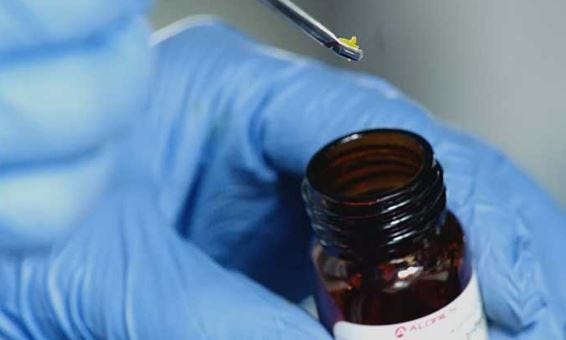Notre Dame Makes ‘Golden’ Discovery for Breast Cancer Detection
 Roeder's strategy involves injecting gold nanoparticles into the breast.
Roeder's strategy involves injecting gold nanoparticles into the breast.
Subscriber Benefit
As a subscriber you can listen to articles at work, in the car, or while you work out. Subscribe NowIt seems fitting that a University of Notre Dame professor would use gold to fight breast cancer, but it wasn’t the school’s reverence for the heavy metal that led to its use in Dr. Ryan Roeder’s laboratory. Instead, a scientific stumble of sorts uncovered gold’s ability to help detect breast cancer. When bone’s inherent density foiled Roeder’s original plan to use gold to help detect fractures, it revealed the metal’s potential in soft tissue instead. Roeder believes the discovery could help detect the 50,000 cases of breast cancer doctors miss each year—potentially creating a new “gold standard” for diagnosis.
Roeder emphasizes that mammography is the best method for diagnosing breast cancer, “but anything can be made better.” He wants to improve the imaging technology for a sub-population of women who have the deck stacked against them for a clear cancer diagnosis.
The breast is comprised of two types of tissue: fatty and fibroglandular. On mammogram films, fatty tissue is transparent, but fibroglandular tissue appears white so radiologists can’t “see through” it, making it difficult to spot microcalcifications—the abnormality that can indicate cancer. Therefore, Roeder says a mammogram may not be enough for women with higher amounts of fibroglandular tissue who are classified as having dense breast tissue.
“Additionally, women with high-density breast tissue have a four-to-six times greater risk of getting breast cancer,” says Roeder, “and are three times less likely to have an abnormality detected.”
The dilemma has led many states, including Indiana, to pass a law requiring doctors to notify patients if they have high-density breast tissue, meaning their mammogram may not be a thorough enough cancer screening.
In addition to missed diagnoses, Roeder says this sub-population of women are often given false positives to err on the safe side—meaning they have to endure the emotional and economic burden of a biopsy, the next level of screening.
Roeder is developing a method he believes could catch these most elusive cases of breast cancer. His strategy involves injecting gold nanoparticles into the breast. The gold targets and attaches to any microcalcifications that are present and, much like metal shows up clearly on security images at the airport, the gold is very easy to see on mammogram films—even in high-density breast tissue.
“If it truly is a microcalcification, [the gold] will attach to it. If not, the gold will clear out,” says Roeder. “This could be used as a more sensitive diagnostic to rule out false negatives, or if the radiologist sees something that looks suspicious and would normally jump right to a biopsy—this would be another diagnostic that could be done for more definitive results.”
Roeder envisions the method being used to provide greater sensitivity for someone at high-risk of developing breast cancer or in women with high-density breast tissue. Roeder says it would also be an inexpensive method to implement.
“You can do this with existing imaging technology; you don’t have to bring in a whole new suite of imaging instrumentation into the clinics,” says Roeder. “We can use the existing technologies with simply administering this small dose of gold nanoparticles to the site that we’re interested in.”
Roeder says pre-clinical studies for this method are producing “very good” data, and he’s now working on a translational model to build the bridge to clinical studies.
Although Roeder is an aerospace and mechanical engineering professor, he’s affiliated with the university’s bioengineering graduate program—which he’s pushing to become a full-fledged academic department to spark more collaborative discoveries.
“As engineers, we make things. Some of the things I make are smaller than what you can see with the naked eye—these nanoparticles,” says Roeder. “We make new things, and we make old things better—that’s what we’re all about as engineers.”
Roeder says using metal for security and medical imaging is already common practice.
Roeder says the method could have application beyond detection.
